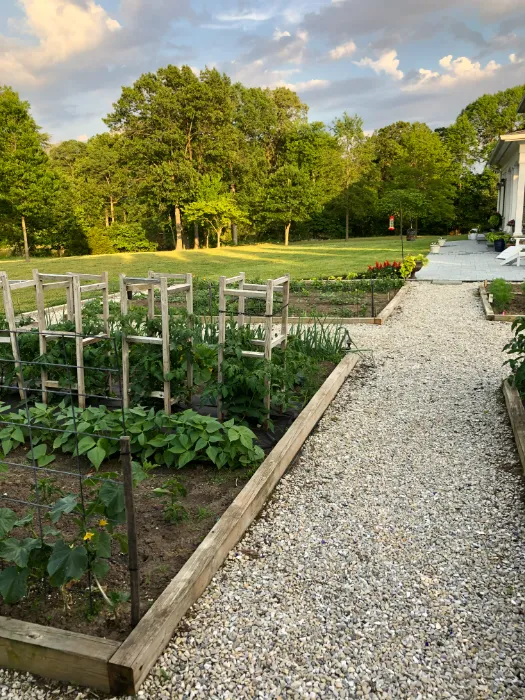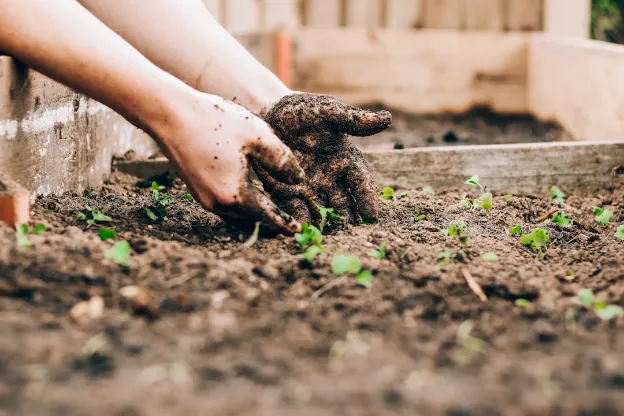What are the 3 numbers on Fertilizer?

Vegetable Fertilizer
What is the best fertilizer to buy? Have you ever shopped for fertilizer and walked out of the store more confused than when you went in? There are so many kinds and varieties, it seems so overwhelming! Well today, hopefully I can help you understand more of what you need for your vegetable garden, but first let's talk about those 3 letters on the fertilizer bag.
Here’s what you need to know:
What are the 3 numbers on the fertilizer container or bag?
10-10-10, for example, stands for N-P-K. These are the primary macronutrients needed for plant nutrition, Nitrogen (N), Phosphorus (P), and Potassium (K). I know what you are thinking, why is there a K for Potassium? Well back in the day when the periodic chart was developed, Kalium was the name given by a chemist, hence “K” for Potassium. You may see Potash and Potassium used interchangeably in gardening, but potash is a fertilizer that contains potassium in a water-soluble form.
These numbers represent the nutrient content as a percentage of the weight of fertilizer bag. So if the bag weighs 100 pounds then the 10-10-10 on the bag really means that there would be 10% or 10 pounds of Nitrogen, 10% or 10 pounds of Phosphorus and 10% or 10 pounds of Potassium in the 100 pound bag. The remaining weight is filler, usually sand or granular limestone.
Here is another example: To calculate the pounds of nitrogen in a 50-lb bag of 10-10-10 fertilizer, multiply 50 by 0.10. Do the same for calculating the amounts of phosphate and potash. A 50-lb bag of 10-10-10 contains a total of 15 lbs of nutrients: 5 lbs nitrogen, 5 lbs phosphate and 5 lbs potash. The remaining weight is filler, usually sand or granular limestone.
Ok…got it. Now what are the Macronutrients N-P-K roles in plant nutrition?
When you see the bag and you find where the numbers are, how are they to help my vegetable plants? Well this label, known as the fertilizer grade, is a national standard. Try to remember the saying,” Up, Down, All Around” when analyzing this label.
Nitrogen (N) is for growth and making things green, hence the ‘“UP”
Phosphorus (P) is the energy for root development and flowering, hence the “Down”
Potassium (K) is for overall health of the plant, hence the “All Around”
So next time you are at the store and you think, “What do these numbers mean?” You can, at least, know the “Up, Down, All Around” jingle to remember the roles of the Macronutrients in plant nutrition.
How do we fertilize our vegetable plants with these primary macronutrients?
Well I hate to tell you this, but we Don’t Fertilize the Plants. We need to replace the missing nutrients in the soil. Let’s take a deep dive into this….
Plants in general, only take up the nutrients they need, when they need it, in their growth cycle. If you increase the fertilizer, because more is better or give the plants all the nutrients in bigger ratios, the plant will still only uptake the nutrients it needs. The soil on the other hand may have not enough or too much of a nutrient and too much may cause a build up in the soil that may be detrimental. For example, it may build up the salts in the soil too much and that kills the good bacteria, microbes and good fungi. This can cause plant disease due to the imbalance of the soil. This build up binds up the nutrients and prevents the plant from getting access to use them.
So let's get a soil test to see what the soil is lacking and only give the soil that nutrient for proper balance in the soil. Let me say that again, when buying fertilizer only buy what your soil is deficient in and add that. Now we can see why a SOIL TEST is so vital to the health of your vegetable garden.
This is really hard to comprehend because all the fertilizer companies market to what your plant needs and not what your individual soil needs. Let's look at a vegetable fertilizer, like a tomato fertilizer.
has a ratio of 4-3-6.
has a ratio of 18-18-21
has a ratio of 3-6-4.
Now we can see why we are all confused. All these companies do their own research for what tomatoes need, but somehow they come up with different ratios in their product. We, as consumers, need to think of fertilizers differently and go with what our soil in our garden needs and not what we are told the plant needs. This way of thinking about the 3 numbers on the bag will make it more simple for us to have a well balanced garden that will flourish.
Organic vs Synthetic Fertilizer: Is it a myth that Synthetic fertilizer is bad for the plant?
Yes it is a Myth.
On a molecular level that plant sees the nutrient the same even though they come from different places. Let's look at the molecule Nitrate from nitrogen. When the plant uptakes this molecule for its nutrition, the molecule is the same in organic matter vs the synthetic fertilizer.
This is what the plants sees and this is what the plant is up-taking for it’s nutrition:
Organic Nitrate molecule vs Synthetic Nitrate molecule
Even though the plant sees them the same and takes both in identically for nutrition, there are other benefits of organic fertilizers. These provide micronutrients to the soil and the nutrients are supplied to the soil more gradually as the organic matter breakdown. On the other hand, synthetic fertilizers are best known for being fast-acting due to being water soluble and the nutrient amounts are highly accurate and precise. This is a decision each gardener should look into more and formulate their own decisions after the soil test.
Vegetable Garden Soil Fertilizer Recommendations
If you are adding compost to your vegetable garden (5% is the usual recommendation) then remember that it fertilizes the soil for longer, so the amount of synthetic fertilizer you need is less at about 3-1-2 ratio. Don’t forget that this is a ratio, so 3-1-2 equals 6-2-4 equals 9-3-6. I am not sure why, but when you buy fertilizer, usually the higher numbers are cheaper for some reason.
Here are some examples of this exact ratio:
Here are some with approximate ratios:
In this ratio the middle number is lower and why is that when we want the Phosphorus (P) to help the roots and blooms? But, the fact is that most soils are high in phosphorus, so we don’t need to add this. Your soil test will let you know if this “P”number needs to be greater or not for your fertilizer.
In raised beds, if you are using a soil-less potting soil mix, add organic compost and fertilizer with the 3-1-2 ratio because the soil-less mix usually does not provide everything the plant needs.
One last thing, Nitrogen is not analyzed in your soil test. Nitrogen
levels can fluctuate widely with weather and soil conditions over very short time periods.
Nitrogen recommendations when getting a soil test are based on crop needs with the assumption that very little available N remains in the soil at the end of the growing season. Recommendations given reflect the amount of nitrogen needed for one growing season.
In conclusion
Confusion standing in the aisle of the garden store will now be a distant memory.
You will go into the store to buy fertilizer for YOUR SOIL not the plant. Now that you understand what the 3 numbers are, what they represent and how they are needed in the soil of your vegetable garden or flower garden, you will be more mindful of getting that soil test and only amending the soil with what it needs. Happy Gardening from one gardener to another!
Related Articles:
19 Shallow Rooted Plants for your Raised Beds:
https://inthegardensue.com/blog/19-shallow-rooted-plants-for-your-raised-beds
The Best Companion Plants for Vegetable Gardens:
https://inthegardensue.com/blog/companion-plants-for-vegetable-gardens
7 Best Garden Tools for Women to make gardening easier:
https://inthegardensue.com/blog/-7-best-garden-tools-for-women-to-make-gardening-easier



